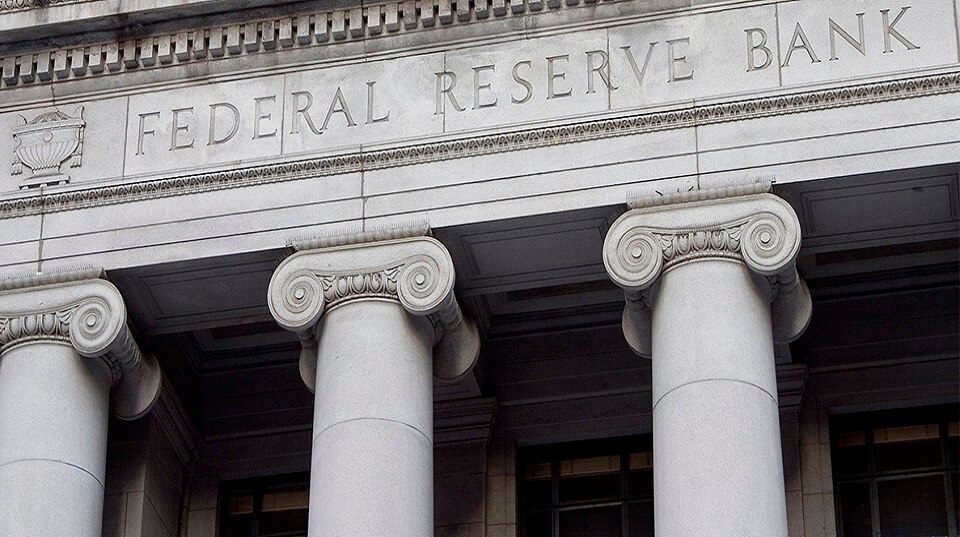Waiting for the End... Just Not Yet

Key Points
The Fed made no changes to its interest rate or balance sheet policies; but some of the language in its statement was tweaked, reflecting recent hotter inflation data.
Underscoring a bit of a hawkish tilt, the FOMC—in its dots plot—signaled they now expect two interest rate increases by the end of 2023.
Despite continued progress in the labor market and an increasing pace of inflation, Chairman Jerome Powell reiterated that the Fed will be transparent in signaling when a tapering in asset purchases is to come.
As was widely expected—by investors and the futures market—the Federal Open Market Committee (FOMC) raised the fed funds rate by 25 basis points to a current range of 4.5% to 4.75%. That move was another "step down" from the prior increase of 50 basis points, and the four increases of 75 basis points at the four FOMC meetings before that. The decision was unanimous, with no dissenters among the Committee.
Per the accompanying statement, the "committee anticipates that ongoing increases in the target range will be appropriate in order to attain a stance of monetary policy that is sufficiently restrictive to return inflation to 2% over time." That was essentially a repeat of language it has used in previous statements and via other communication channels. There had been some chatter (not including ours) about the Federal Reserve possibly telegraphing that they "were done" at this month's meeting, but the "ongoing increases" comment puts that notion, at least for now, to bed. That helps to explain the initial negative reaction by stocks.
The end is near
Indicating that the end of the cycle is nearing, the FOMC's statement noted that inflation "has eased somewhat," reflecting rising confidence in inflation's peak moving further into the rearview mirror. The statement also adjusted its language around the Russia/Ukraine war; having previously noted that the "war and related events are contributing to upward pressure on inflation," but now focusing more on the war's impact on "elevated global uncertainty."
Perhaps as a hopeful sign of the pandemic receding as a major influence, this month's statement eliminated the prior reference to "public health" on its list of what the FOMC is assessing to gauge the "appropriate stance of monetary policy." The other information the Fed is watching continued to be listed, including "labor market conditions, inflation pressures and inflation expectations, and financial and international developments."
On to the presser, and key highlights
As usual when penning these missives, the bulleted highlights below will cover the first 30-40 minutes of the press conference with Fed Chair Jerome Powell, in the interest of getting the report into the publishing queue with speed and efficiency.
- As usual, there was an acknowledgement of the pain and hardship wrought on the public from high inflation.
- The U.S. economy "slowed significantly" in 2022, but indicators suggest "modest" growth in this year's first quarter.
- Repeated again was that "ongoing increases" will be appropriate and that there are "no grounds for complacency" due to the risk of high inflation becoming "entrenched" in expectations.
- Shifting to a slower pace of rate hikes allows the FOMC to better gauge how the economy is responding and that future decisions will be made "meeting-by-meeting."
- The Fed has been "taking forceful steps," but reducing inflation further will involve "below-trend growth and a softer labor market."
- "History argues against relaxing policy prematurely."
- Financial conditions have "tightened very significantly" over the past year, but the Fed is "not yet" at a sufficiently restrictive policy stance, and that "many things affect financial conditions, not just Fed policy."
- The Fed's "focus is not on short-term moves [in financial conditions], but on sustained changes." (The lack of a substantial push-back on the recent loosening of financial conditions probably contributed to the market's turn higher.)
- It is "gratifying to see the disinflationary process now getting under way and we continue to get strong labor market data;" and that so far, they "see progress without any weakening in labor market conditions."
- The average hourly earnings measure of wages and the employment cost index (ECI) have abated but remain at "elevated levels," with volatile but still-high jobs openings cited as an "important indicator."
- Reiteration of the "risk of doing too little" is greater than doing too much.
- It's important to focus on inflation in "core services excluding housing" which needs to show disinflation before the Fed can say its job is complete.
- Goods inflation is coming down "pretty fast" now.
- "Ongoing increases" in rates likely means "a couple more hikes" before the terminal rate is reached. (That would bring the rate to a 5% to 5.25% range.)
- Regarding the debt ceiling, "nobody should assume the Fed can save the economy if there's a default" and that the "only way forward" is for Congress to raise it.
- Noted was that "state and local governments are flush" with cash, which should help "support growth this year."
- The Fed is not exploring the option of taking some "gaps" between FOMC meetings, but that "a lot of options are available" in terms of future moves in policy.
- Powell continues "to think that there's a path to getting inflation back down to 2%" without a significant economic and/or employment decline.
- The "base case" for 2023 is for "continued, but subdued growth" (as was the case in 2022).
In sum
Neither the Fed's decision nor the statement was outside the consensus expectation. There was also no publishing of updated economic or rate projections (those come at the next FOMC meeting in March). Yes, the finale of the most aggressive tightening cycle in four decades is within site, but the statement did not suggest the moment of "pause" and the reaching of the "terminal rate" is imminent. We do expect any additional hikes to be of the 25-basis-point variety; but with the Fed likely having more work ahead of them to convince markets that rate cuts are not likely by year-end absent a more meaningful deterioration in the economy and/or labor market.
The markets' moves were extreme. Stocks initially sold off sharply, before staging an impressive rebound during the press conference. Bonds were volatile, too, with the two-year Treasury yield popping higher initially to nearly 4.25% before sinking during the presser to as low as 4.1%.
For now, we believe the U.S. economy remains in the midst of a "rolling recession," with consumer goods and housing/housing segments related in recession, but stronger services spending serving as a positive offset for now. An "official" recession (declared, ultimately, by the National Bureau of Economic Research) remains a risk given the messages emanating from the deeply inverted yield curve and the 10-month plunge in leading economic indicators. Key to remember though is that the stock market is one of those leading indicators and like is typically the case, should lead the economy as it eventually stabilizes. That's not to say the bear market is over, but that a lot of the economic pain and inflation already experienced has been reflected in the bear market that's been underway for more than a year.
What You Can Do Next
Follow Kathy Jones (@KathyJones) on Twitter.
Talk to us about the services that are right for you. Call a Schwab Fixed Income Specialist at 877-566-7982, visit a branch, find a consultant or open an account online.
 By
By